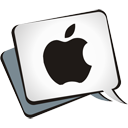As a developer, one of your end goals is to successfully submit your app to the app store. This way, users can find, download, and use it on their own devices. Over time, your app can gain popularity and become more profitable. Learn more about how to submit an app to the app store in this article.

1) Create an Account on Apple’s Developer Program.
The Apple Developer Program enables you to submit apps on the app store. While it’s free to become an Apple developer, you can’t submit apps without paying the fee of $99. Registering on the Apple app store through the Apple Developer Program is the first step to getting your application out there. It also provides you access to Beta versions of Apple software and app analytics tools.
To enroll in the Apple Developer Program, visit the Apple Developer website and click the “Account” button on the upper right-hand side. You can choose to sign up with your current Apple ID or create a new one. Remember to use an email that you frequently check so that you can receive regular updates from Apple. Read through all the security questions and agreements, and then click submit.
2) Join the Developer Program.
After registering for the Apple Developer Program through the previous steps, you’ll need to join the program by clicking the “Enroll” button. Afterward, you need to choose whether you’ll enroll as an individual or a company. The process will be more complicated if you choose to enroll as a company. You’ll have to submit additional documents that prove your legitimacy as a business entity and your involvement with the company. However, enrolling as a company could help you invite more people to join your development account.
Once you decide whether to enroll as an individual or company, complete the required information on the screen. Make sure to enter the correct details because Apple may confirm them with your credit card company. You’ll be given a cost and summary for the purchase, which you need to pay. Once you’ve paid, you’ll be redirected back to the main page, where you can continue with the enrollment process.
3) Test Your App for Bugs.
Before submitting your app to the Apple store, you should test it for bugs. Testing is important because if your app contains bugs, it could prevent it from being approved by Apple. Or worse, hackers may take advantage of your app by using them as a gateway into other people’s accounts.
There are different ways to test your app for bugs. For instance, Apple has the Public Beta Software Program, which allows developers to distribute betas of their apps to testers. People can test apps before they’re released to the public. It’s a great way to conduct usability tests and see how users interact with your app.
4) List Your App on the Apple Store.
The next step to getting your app on the Apple store is to create a listing. Click on the “+” button on the App Store connect dashboard. You’ll need to fill out a form that asks for basic information like title, description, keywords, price, rating, and other details. Choose the appropriate category depending on what app you want to list. Developers who want to list a social media app must provide a test account and password for the Apple reviewer.
The interface of listing your app on the Apple store is pretty straightforward. If you encounter any problems, you can click on the “?” button for more information. At the end of listing your app, you’ll be asked when you want your app to be released. After the app passes the certification process, you can choose whether to release it manually, immediately, or on a date.
5) Create Icons and Screenshots for Your App.
After listing your app on the apple store, you’ll now need to create icons and screenshots for your app. These images are used in the Apple store to promote your app. There are different ways to create icons and screenshots, such as using raw screenshots or creating custom ones. But before you start creating them, you should know some basics about design. For instance, you need to ensure that the icons and screenshots look good on different Apple devices.
6) Submit Your App for Review using Xcode.
Now that all the details are submitted, you can begin submitting your app for review. However, apps submitted for review need to have their build uploaded on Xcode first. To do this, open Xcode and select Generic iOS Device as the deployment target. Afterward, the Xcode organizer will launch, and you’ll have to click “Upload to App Store.” Select your credentials, click choose, then click upload. Once your app is uploaded, click “Done.”
7) Wait for Apple’s Approval Process.
It usually takes around 24 hours for Apple to approve your app. During this time, you’ll receive emails that will update you on the process. However, if you need to release an app within a shorter period, faster processes are available for expedited reviews. Rejected apps need to be fixed before they can be submitted again for review. Developers can use the Resolution Center in App Store Connect or submit an appeal. To make sure that your app is approved, always remember to test it for bugs first.
The Bottom Line
The steps above outline the entire process for getting your app ready for submission to the Apple Store. If your app was approved by Apple, congratulations! You can continue creating new features or even develop new apps that users can use and benefit from.
If you liked this article, please consider sharing it with your friends and leaving a comment below. Also, don’t forget to “Like” us on Facebook, “Follow Us” on Twitter and add the Apple Tech Talk channel to your Apple News app.
And if you haven’t subscribed to Apple Tech Talk, now would be a great time to do it so. Just scroll down to the form below and enter your name and email address. Then you’ll receive a notification whenever we post new articles. Don’t worry, we never sell or share your information. While you’re at it, check out our YouTube channel (here) where you will find video on interesting products any Apple enthusiast would love.
Bash Sarmiento

Bash Sarmiento is a writer and an educator from Manila. He writes laconic pieces in the education, lifestyle and health realms. His academic background and extensive experience in teaching, textbook evaluation, business management and traveling are translated in his works.



Thanks a lot for sharing the blog. the information you shared is just awesome and very helpful.